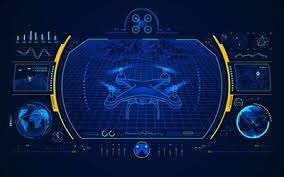Source: expresscomputer.in
Frost & Sullivan’s recent analysis, Digital Transmission Driving the Geospatial Services Market, 2020, covers eight industry use cases and their developments in terms of new technology disruptions, business models, application areas, and trends entering the market. It forecasts that the demand for enhanced and integrated imagery analytics intelligence will uncover new opportunities. Exploration of location data integrated with IoT systems will offer low-cost solutions and customized services. Location-based, real-time surveillance is the fastest-growing geospatial technology and expected to be the main driver of the earth observation industry in the future.
The rising demand for real-time surveillance and location-based intelligence services will pave the way for new companies to enter the geospatial services sector. Access to geospatial data will become simpler in the future, with government downstream operators expected to provide data without any regulation,” said Priyanka Gopalakrishnan, Research Analyst. “However, the entry of multiple drone players is likely to increase the pressure on satellite companies. Compared to satellite operators, drone operators use high-resolution cameras to capture images and can perform operations at much lower costs.”
Gopalakrishnan added: “Blockchain, big data, and artificial intelligence will bring new value propositions into the market and promote innovative business models across various geospatial applications. Advanced geospatial technologies would allow the delivery of products and services at lower costs, which will bring new customers into the sector. Additionally, the geospatial imagery-based analytics market can perform operations on a small budget.”
Market participants should invest in the research and development of geospatial applications and their use cases in the following sectors:
Agriculture: There’s an increased need for real-time prospecting, analytics solutions for damage assessment and insurance estimation using AI. Fully automated drone operators will enable autonomous seeding, spraying and mapping, along with soil nutrient and moisture monitoring.
Automotive: Smart cities, autonomous driving, and business intelligence are expected to be the main growth fields in the future. Drone technology, IoT, AI and ground-based sensors will permit real-time traffic monitoring and control plus logistics tracking. Also, satellite-based tracking will be key for fleet management applications along with the use of GPS receivers attached to vehicles, providing real-time insights.
Energy: Location-based intelligence and AI will play a major role in leak and theft detection, power line distribution monitoring, automated fault inspection and identifying oil spills.
Defense: There will be extensive government use of satellite- and drone-based solutions for terrain mapping. Advanced technologies will also be leveraged for crime analysis and mine clearance.
Healthcare: During the COVID-19 pandemic, most private and government participants used geospatial intelligence to track patient details and identify containment zones. The demand for real-time surveillance across patient health monitoring and disease tracking will grow in the next 10 years.
